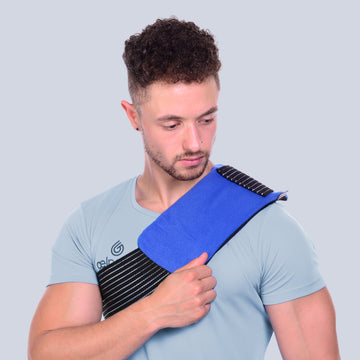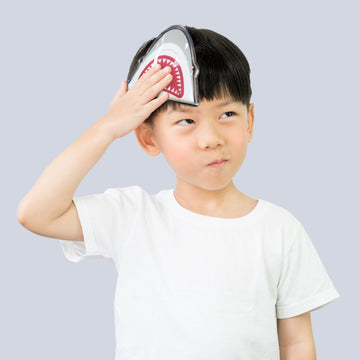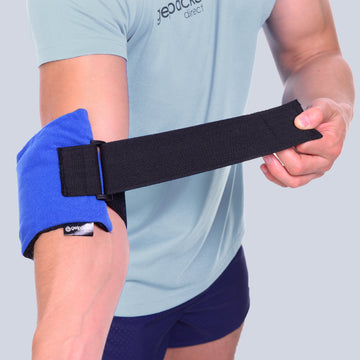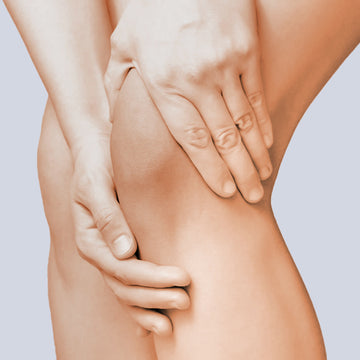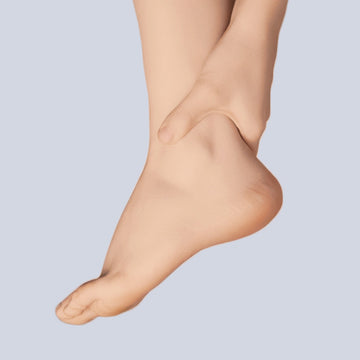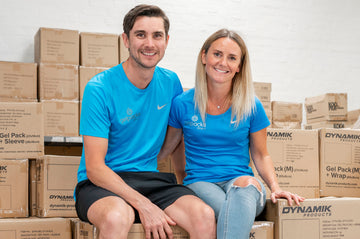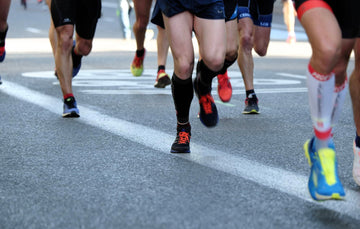Posted by Tia Patel | MAY-26-2020

Do you want to be a triathlete?
Bored of running the same lockdown routes around your local area? Missing the challenges of race season? Why not take up triathlon? You can avoid the walkers and runners on footpaths by taking to the road and cycling, you can even make the most of British summer time and get your own pop up pool for your garden! Great to practice your technique or just as great to bask in the sun with a G&T in celebration of your efforts.
Whilst it may seem daunting for beginners, our simple guide will have you ready to race your first “back garden” triathlon in no time!
How far is a Triathlon?
The ultimate triathlon event is an ultra-triathlon which is any distance above that of an ironman, not for the faint of heart.
What gear do you need?
To prevent injury and make the most out of your triathlon, you need the correct equipment and let’s face it, who doesn’t love an excuse to buy a new kit?
Tri-suit - A multi-purpose suit which can be worn throughout all 3 disciplines. They are designed to dry off quickly after a swim, provide cushioning for the cycle and allow you to move freely during the run. A tri-suit can be worn underneath your wetsuit and needs to be a tight-fit.
Goggles and cap - A good pair of goggles will hold on your face with just the vacuum seal and will be essential in the swim portion of the race. A poor fitting pair of goggles will immediately fill with water as you start to swim, significantly slowing you down. Steamed up goggles are a disaster, there are no lanes to follow in the open water. You need to be able to see where you’re swimming.
Bicycle and helmet - Bikes range in price but a road bike that's in good working order will be just fine to get you started. Once you get the bug, you’ll spend as much on your bike as you would on a small car! You can add on an aero bar and take it for a tune up at your local bike shop to adapt it for triathlon purposes. If using clip-in shoes for the bike leg, secure these to your pedals with an elastic band when you leave your bike at transition.
Helmets need to have passed certain safety tests to be triathlon-eligible, these can be purchased from specialist cycling stores. Be sure to bring your triathlon sunglasses with you to ensure that that your new helmet will fit properly over your shades.
Running shoes - Seek specialist advice from a physio or movement expert if you have concerns about your footwear. You need to find the best running shoe for you, there is no one size fits all (obviously!). It is often a case of trial and error until you find a brand you like.
You can go to your local running shop for some basic advice on fit and cushioning. We recommend that you do this later in the day as your feet will swell and so will be slightly bigger in the evening than in the morning.
To help with the transition from bike to run, use elastic laces with a pull cord so you can slip on those running shoes without worrying about the lace coming undone or not being tight enough.
If Ironman is your goal, make sure you memorise the rule book! This brand is very particular when it comes to following the rules, and any infringement can result in disqualification. Nobody wants a DNF on their record, right? Make sure your equipment meets the standard, your race numbers are correctly positioned and remember there’s, definitely no nudity allowed in transition!
Our top tri training tips!
- With the cycle section taking up the largest portion of triathlon distance, it makes sense that this should account for the majority of your training hours. According to the 2019 Les Mills Global Consumer Fitness Survey, 20% of the global fitness market are already doing, or would consider, indoor cycling, it is almost certain that this figure will have increased since the pandemic. So, our luck is in, rain or shine, there are no excuses for missing that training session.
-
For most of us, the swim section will be the most challenging. Invest in some adult swimming sessions to improve your technique and overall fitness. Nobody wants to be with the breast-stokers at the back, and your fellow triathletes will not not thank you for a frog leg kick in the ribs…. or the face! The latest craze, now that we are all #Stayinghome, is to have a pop-up pool in your garden. Anchor yourself to a fixed and stable point, then swim against your own resistance. Simples!
- Don’t forget to include strength training exercises in your training plan. This will help to build endurance, increase speed, and increase your time to exhaustion, meaning you can run further, faster and longer.
- Practice transitioning from swim to cycle and cycle to run, this includes a change in equipment. Prepare your body for multi-sports as your body won’t be as fresh as if you’ve just left your house to go for a run when you undertake the final portion of the triathlon.
- Remember, rest and recovery is key to success. We recommend using Dynamik's Ice Pack with Strap for hot and cold therapy throughout training and immediately after your triathlon race to soothe inflamed and swollen muscles, boost recovery and reduce the risk of injury.
You’re now ready to embark on your new adventure of becoming a triathlete and ticking off “race a triathlon” on your bucket list! Don’t forget to tag us @gelpacksdirect to share your triathlon journey! If you want to know more about our products click here!
